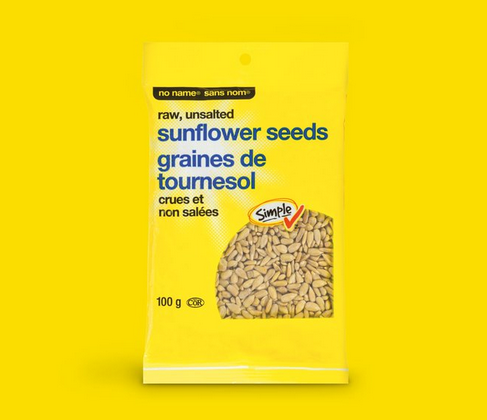
 The first thing I think of when I hear the name “President’s Choice” is chocolate chip cookies. Thirty-five years ago, when this store brand first appeared on Canadian Loblaw’s shelves, it packed more chocolate chips into their cookies than any other brand. Even more than the name brand cookies. (Even more than my mom’s home baked cookies.) It was the only “brand” of cookie that any Canadian kid wanted.
The first thing I think of when I hear the name “President’s Choice” is chocolate chip cookies. Thirty-five years ago, when this store brand first appeared on Canadian Loblaw’s shelves, it packed more chocolate chips into their cookies than any other brand. Even more than the name brand cookies. (Even more than my mom’s home baked cookies.) It was the only “brand” of cookie that any Canadian kid wanted.
The President’s Choice brand was the brain child of Dave Nichol, the president of Loblaws Supermarkets, a premium supermarket chain. His strategy was to increase the company’s options by creating top quality products at better prices than the leading brands, products that couldn’t be purchased anywhere else but Loblaw’s. The plan wasn’t to create good products. It was to create great products. The President’s Choice brand, Dave’s choice, launched. The no name brand was launched around the same time, but we’ll get to that story in a minute.
The PC brand started with ground coffee. As planned, they made a coffee product that was better than the leading brands. Along with its competitive pricing, it quickly became a top selling item.
The beloved chocolate chip cookies followed soon after and it didn’t take long for them to became the best selling cookie in all of Canada. When the competition was known for having just a few “chocolatey” chips (i.e., not real chocolate) in each cookie, a cookie made with real chocolate chips that comprised nearly half of the cookie was a huge success.
These two amazing products created a trustworthy foundation for people to want to test out all the other President’s Choice products.
The PC marketing strategy was also very focused. Unlike traditional store flyers/circulars which incorporated a multitude of competing brands, the PC team created a print magazine to showcase only their products. Now in digital form, the magazine boasted large tantalizing photos, tasty recipes, household tips, and details about upcoming new products. They also ran many campaigns featuring Dave Nichols as the stereotypical Canadian spokesperson – quiet, kind, and helpful.
By 1990, the PC product line had increased to 500 brands including environmentally friendly products, low-fat products, organics, banking, and household items, often innovating in categories before their competitors. Their magazine was read by nearly 60% of Ontario households. PC was 20% of Loblaw’s revenue and generated $1.5 billion in annual sales.
In the early 90s, PC products had expanded outside of Canada to the USA. Australia, Hong Kong, UK, Sweden, and South Africa.
In 1993, Dave Nichol left the Loblaws team, but when Galen Weston joined as Chair of Loblaws in 2006, he resumed the spokesperson role, also as a stereotypical quiet, kind Canadian. The brand continued to grow and in 2014, PC was named one of the top 10 most influential brands in Canada. In 2016, Strategy chose PC as the Brand of the Year.
.
Today, there are more than 3500 PC products on the shelves at Loblaws and other affiliated stores. Canadians no longer view PC products as a store brand, and PC chocolate chip cookies are just as loved as they always were.
 And what about No Name products?
And what about No Name products?
Well, no name products have also been around a long time. Since 1978. It’s always been the value priced brand in the conspicuous yellow package with minimal messaging that frugal shoppers like myself fill their cart with.
For many years, no name was just another low-priced option on the shelf. They did only a little bit of marketing. But, in the last 5 to 10 years, people have become much more open to discount shopping. The stigma of buying the store brand was going away. It was time for the no name brand to really shine.
In 2019, the brand embraced the minimalism normally associated with store brands and actioned it with a much loved marketing campaign. It included a bright yellow website, a deadpan funny Twitter account, and cheeky minimalist messaging.
They even created “merch.” Confusing to outsiders and humorous to Canadians, we’ve been able to buy bright yellow beach towels that say beach towel and bright yellow t-shirts that say t-shirt. Three years later, the no name marketing campaign continues as a huge success.
.
If your brand needs some inspiration on how to grow, look no further than the product and marketing strategies of these two Canadian brands. Be singular in your product goals and take risks with your marketing strategies. Bringing real people and humour to people’s lives can make all the difference.
.
.
Learn more from our other blog posts
- Getting started with consumer, customer, and market segmentation
- How to conduct a journey mapping research project
- Tips for the First-Time Conjoint Analysis Researcher
- What are customer personas and why does your brand growth depend on them?